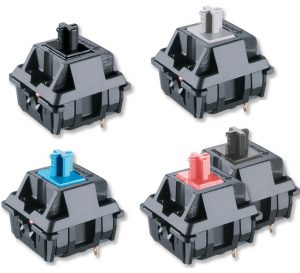The Full Guide to Membrane Switch Technology and Its Applications
The Full Guide to Membrane Switch Technology and Its Applications
Blog Article
Recognizing the Capability of Membrane Switches Over for User Interface Gadget
The capability of membrane changes represents a substantial improvement in interface design, combining efficiency with aesthetic flexibility. These buttons operate with a multi-layered framework that translates customer communications into electric signals, enabling both portable layouts and resilience versus environmental factors. As sectors increasingly focus on individual experience, comprehending the subtleties of membrane layer button modern technology ends up being essential. What ramifications do these innovations hold for future applications, and how might they redefine customer communications across various gadgets?
What Are Membrane Switches?
Membrane layer buttons are cutting-edge user interface tools that help with individual communication with digital devices. These functional parts contain several layers, including a graphic overlay, spacer, and a published circuit layer. The layout enables a smooth combination into various electronic tools, enhancing both the visual and practical facets of interface.
Membrane layer switches are commonly utilized in a large range of applications, from house home appliances to industrial machinery and clinical gadgets. Their building and construction typically features a thin profile, making them an ideal choice for small styles. The responsive feedback provided by these buttons can be crafted to satisfy details individual preferences, guaranteeing effective communication between the user and the tool.
Durability is an additional considerable advantage of membrane buttons, as they are immune to dirt, wetness, and chemicals, which enhances their life expectancy in requiring settings. In addition, these switches can be customized in terms of form, dimension, and visuals style, enabling for branding and user-specific features. In general, membrane changes stand for a sensible service for boosting user experience in electronic devices, integrating functionality with visual appeal in a reliable way.
Exactly How Membrane Layer Switches Work
Operating on a simple principle, membrane layer switches over use a layered building to register user input effectively. Each switch includes several layers, including a printed circuit layer, a spacer layer, and a leading visuals layer, which are developed to work with each other seamlessly. When a user presses the top layer, it compresses the spacer layer, bringing the conductive elements of the circuit layer right into call with each various other.
This get in touch with produces a closed circuit, indicating the device to implement a particular feature. The style permits various arrangements, including tactile comments, which can improve the customer experience by giving a physical experience upon activation. The products made use of in membrane layer switches usually consist of adaptable substrates, such as polyester or polycarbonate, which ensure toughness and durability versus deterioration.

Key Advantages of Membrane Layer Buttons

Another considerable benefit is their compactness. Membrane layer buttons are thin and light-weight, which allows suppliers to save space in their devices without giving up performance. This function is especially useful in applications where weight and quantity are vital considerations.
Additionally, membrane switches are immune to dirt, wetness, and chemicals, boosting their toughness. This durability extends their lifespan and decreases the need for frequent substitutes, leading to cost savings with time.
In addition, the tactile feedback supplied by membrane buttons can be enhanced to boost individual communication. They can consist of functions such as elevated switches or distinct clicks, enhancing functionality and user experience.
Applications Throughout Industries
Interface devices utilizing membrane layer buttons prevail in a broad selection of industries, showcasing their adaptability and functionality. Membrane Switch. In the clinical sector, membrane switches are important to devices such as diagnostic tools and patient surveillance systems, where their durability and simplicity of cleaning are critical for maintaining hygiene criteria. Similarly, in the auto industry, these switches are utilized in control panel controls and infomercial systems, giving a sleek and modern interface for individuals.
Additionally, the customer electronics sector advantages from membrane layer switches in appliances and portable tools, where small style and straightforward user interfaces boost individual experience. Industrial applications additionally utilize membrane switches over for control board in machinery and automation systems, stressing their robustness and resistance to harsh settings.
In the aerospace and defense markets, membrane layer switches are made use of in cockpit controls and tools, where dependability and efficiency under severe problems are critical. Additionally, the gaming sector progressively integrates membrane layer buttons in controllers and game machines, adding to an engaging customer experience. In general, the convenience of membrane layer changes allows their prevalent use throughout many sectors, emphasizing check this their significance in modern interface layout.
Future Fads in Membrane Layer Switch Technology

In addition, the use of innovative products, such as polycarbonate and polyester films, is expected to rise, giving boosted resilience and resistance to environmental stress factors. These materials add to the overall durability of membrane layer switches, making them appropriate for harsher commercial applications.
Moreover, the incorporation of wise technology, including IoT connectivity, will certainly allow membrane buttons to interact with other gadgets and systems, helping with a much more interactive individual experience. This trend straightens with the growing need for wise gadgets across numerous sectors, from medical care to customer electronic devices.
Lastly, customization choices are prepared for to broaden, enabling makers to develop bespoke remedies customized to details customer requirements and choices. These developments will place membrane switches as vital elements in the advancement of interface technology.
Conclusion
In verdict, membrane changes represent a crucial innovation in individual interface technology, using a dependable and flexible remedy for diverse digital applications. As developments in product science and touch sensing modern technologies continue, the functionality and applicability of membrane useful content layer switches additional reading are expected to broaden, strengthening their significance in modern digital tools.
Report this page